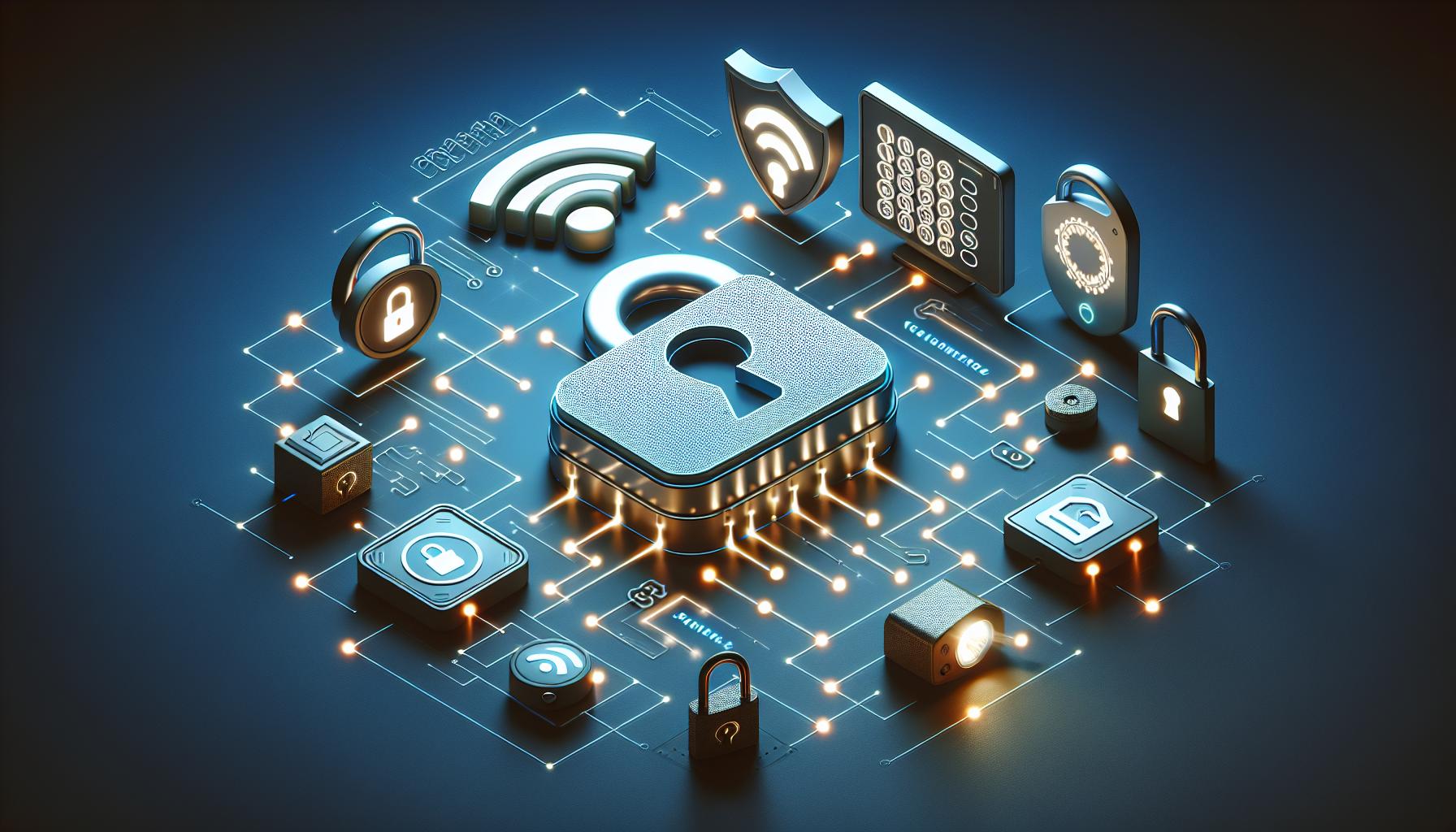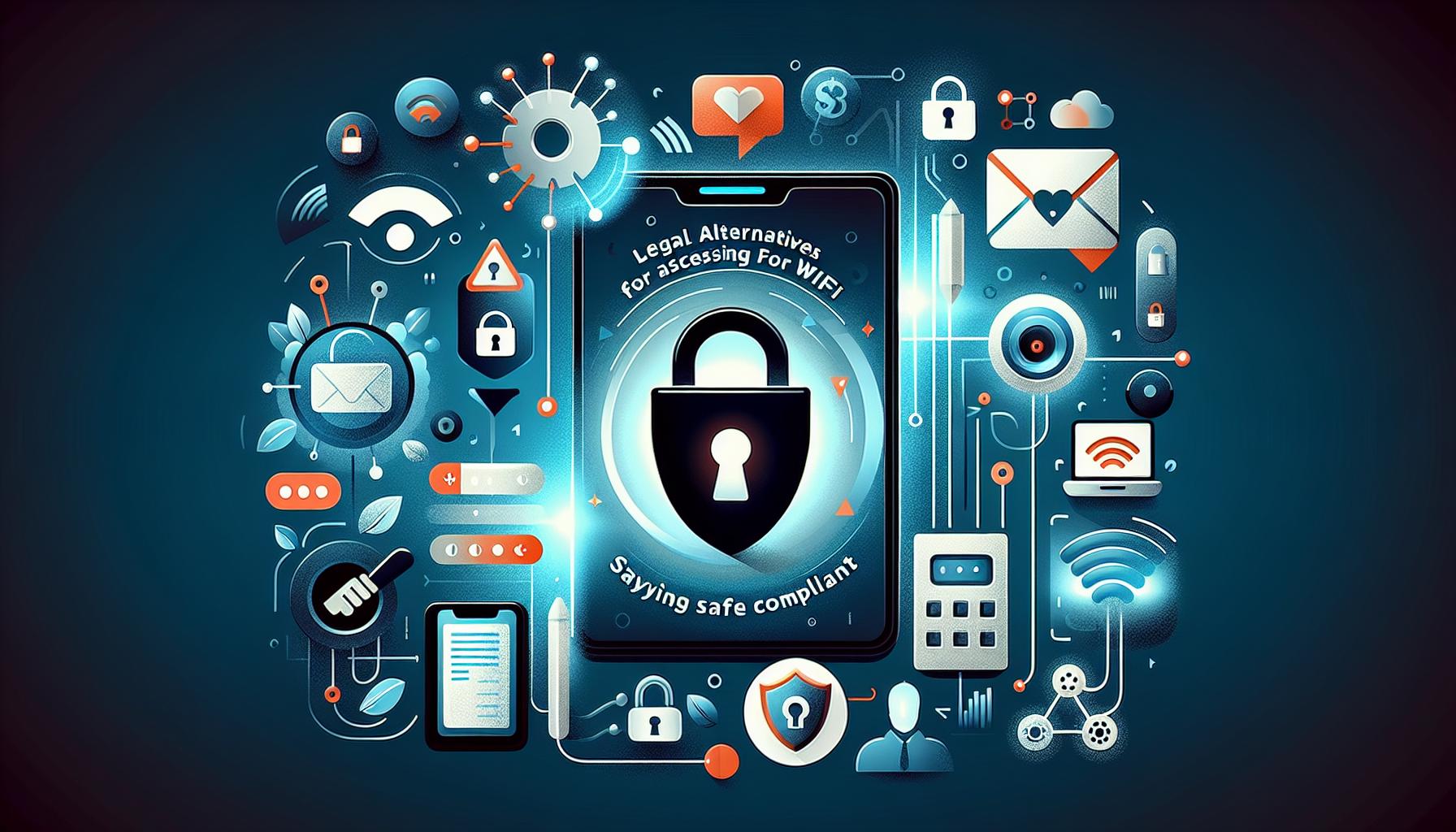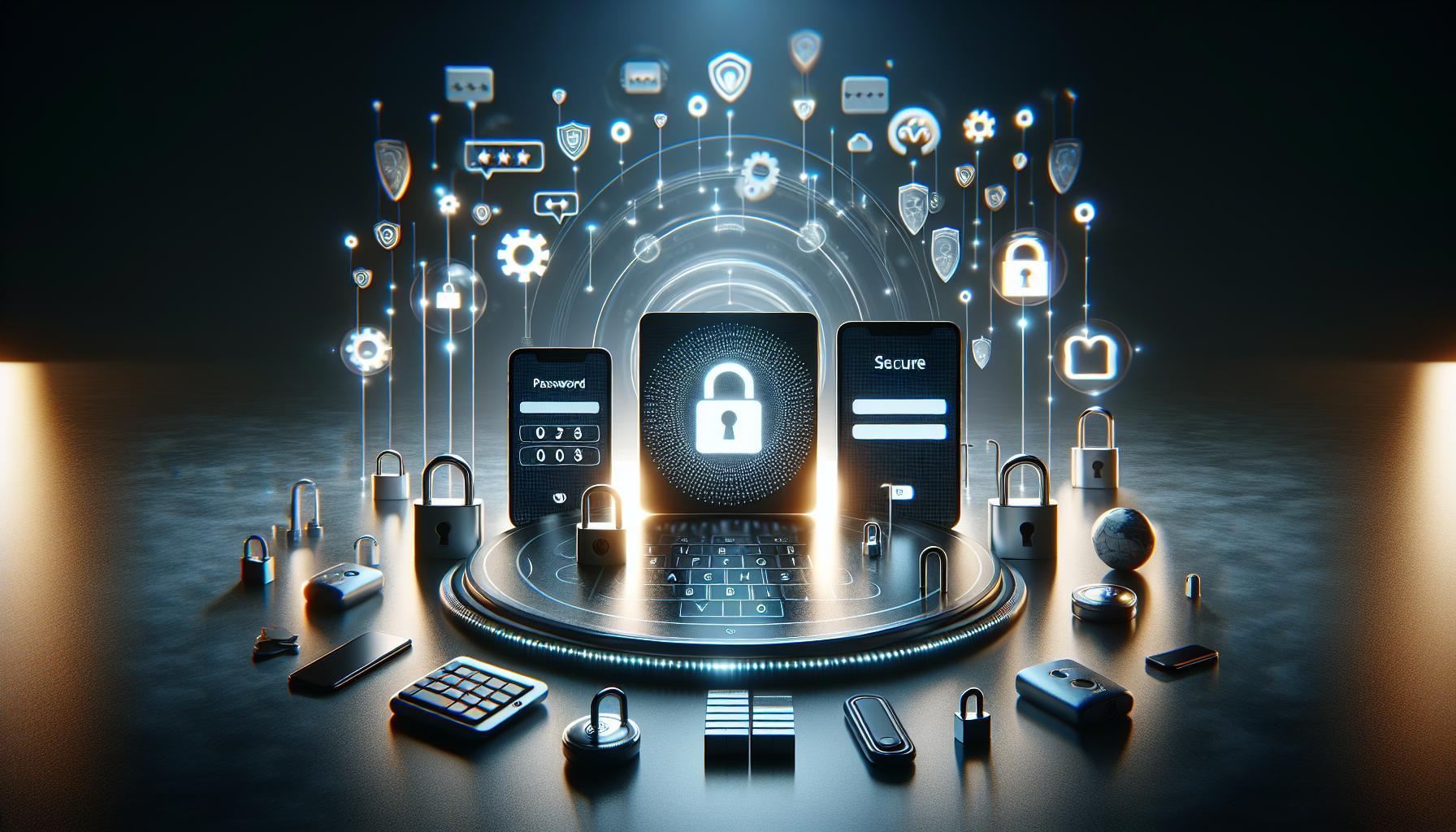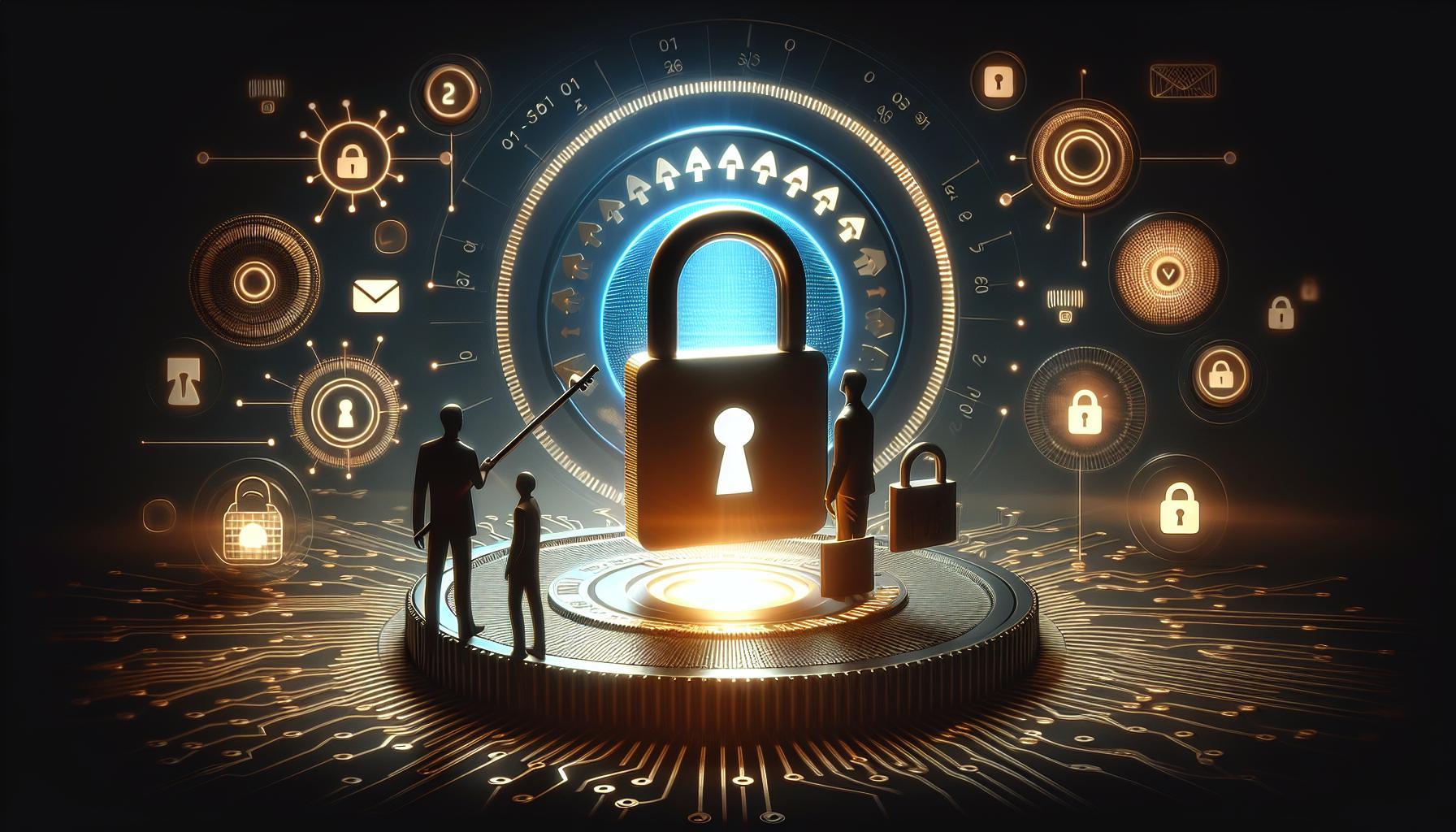in an era where connectivity is essential, misconceptions about Wi-Fi security can leave users vulnerable to threats like insecure networks and unauthorized access. Understanding the myths surrounding password hacking is crucial for safeguarding personal information. This article explores prevalent myths, the real risks involved, and legal alternatives for ensuring your Wi-Fi remains secure and private.
Debunking Common WiFi Hacking Myths: What You Really Need to Know
The world of WiFi security is fraught with misunderstandings and misrepresentations, often amplified by popular media. Many people believe that WiFi hacking is a simple task that anyone can achieve with minimal effort.However, the reality is far more complex and nuanced. understanding the common myths surrounding WiFi hacking – including those about accessing passwords and the implications of unauthorized access – is crucial for both users and potential hackers alike.
Common Misconceptions
There’s a prevalent myth that hacking into WiFi networks is akin to using hacking tools available online, which can magically bypass any security measures. In truth, effective WiFi hacking often requires substantial technical knowledge and experience. Moreover, many so-called “hacking tools” are ineffective against modern security protocols, such as WPA3, which employs advanced encryption methods designed to thwart unauthorized access. Thus, the idea that anyone armed with a simple request can easily hack into a secured network is misleading.Another misconception is that using someone’s unsecured wifi is a harmless act. In many jurisdictions, this behavior is classified under computer trespassing and can lead to legal repercussions, including heavy fines or criminal charges [[1](https://wnesecurity.com/is-it-illegal-to-use-someone-elses-wifi-without-permission/)]. Engaging in unauthorized access not only poses risks of prosecution but can also expose users to identity theft and fraudulent activities carried out under their name.
real-World Consequences
Real-life examples further illustrate the dangers associated with unauthorized WiFi hacking. There have been cases where individuals were caught accessing and misusing networks without permission and faced serious legal consequences, reinforcing the fact that the risks are vrey real and not just theoretical [[3](https://opensecuritylabs.com/blog/2024/09/unauthorized-wifi-hacking/)]. Additionally,even if one manages to access a WiFi network,the chances of getting detected are high,especially in areas where people are vigilant about network security.
- Legal Risks: Unauthorized access can lead to civil lawsuits or criminal charges.
- Identity Theft: Infiltrating unsecured networks can make users susceptible to various cyber crimes.
- Network Vulnerabilities: Hackers may exploit your device for attacks on other networks.
Understanding these myths and their real-world implications is crucial not only for enhancing personal security but also for promoting ethical behavior in the digital landscape. By recognizing that WiFi hacking is not as straightforward as it seems, individuals can better protect themselves and their networks from potential threats, while also adhering to legal standards and practices.
Understanding the Risks of Insecure WiFi Networks
In today’s digital age,using an insecure WiFi network can feel as innocuous as sharing a cup of coffee with a friend,but the risks involved can be just as harmful as they are unpredictable. In public spaces like cafés, airports, or even hospitals, connecting to open wifi networks creates opportunities for cybercriminals to exploit unprotected communications, leading to potential identity theft, data breaches, and unauthorized access to sensitive information.
Common Risks Associated with Insecure WiFi Networks
When you connect to an unsecured network,myriad threats loom,such as:
- Data Interception: Without encryption,any data transmitted can easily be intercepted by malicious actors. This includes passwords, credit card numbers, and personal messages.
- Man-in-the-Middle Attacks: Hackers can place themselves between your device and the server you’re communicating with, allowing them to monitor and manipulate the data being exchanged.
- Malware Distribution: Unsanctioned WiFi networks can be used to introduce malware into your device without your knowledge,compromising your computer or smartphone.
- Session Hijacking: Cybercriminals can steal cookies from your logged-in sessions, gaining access to your accounts on social media or banking sites.
the frequency and ease of these attacks make it critical for users to approach public WiFi with caution. The reality is that many individuals underestimate the dangers of connecting to these networks, frequently enough believing that their personal information is somehow safe or secure. In fact, a significant number of users continue to be unaware of basic security measures that could protect them, such as using a Virtual Private Network (VPN) or opting for websites that utilize HTTPS.
Practical Steps to Protect Yourself
Taking proactive steps can significantly mitigate the risks associated with insecure WiFi networks:
- Utilize a VPN: A VPN encrypts your internet connection, creating a secure tunnel for your data to travel through, making it arduous for outsiders to intercept.
- Enable Firewall Settings: Ensure that your device’s firewall is active to provide an extra layer of protection against potential attacks.
- Avoid Sensitive transactions: Limit online banking and shopping activities to secured networks only. If you must perform these tasks on public WiFi, be extremely cautious.
- Forget Networks: After using a public network, ensure your device does not automatically reconnect to it in the future by forgetting the network.
By being aware of the dangers and implementing security measures, you can enjoy the versatility of public WiFi while protecting yourself from the myriad risks associated with unsecured networks. The fascination with WiFi password hacking myths often overshadows the real risks posed by these unsuspecting networks, which makes being well-informed an essential aspect of safe internet usage today.
Legal Alternatives for Accessing WiFi: Staying Safe and Compliant
Finding reliable and legal ways to access the internet is essential for maintaining both your digital privacy and social compliance. As concerns continue to grow around WiFi security and the risks associated with unauthorized access, it’s crucial to explore legitimate alternatives.numerous options exist that allow users to connect to the internet safely without resorting to hacking or illegal activities.
Alternative Methods for WiFi Access
There are several alternative methods for accessing wifi legally, empowering users to stay connected without breaking the law. The following options may suit different circumstances, particularly for those seeking free or affordable internet:
- Mobile Hotspots: Many smartphones come equipped with hotspot capabilities, enabling users to share their mobile data connection with nearby devices. This method is particularly useful when customary WiFi networks are unavailable.
- Community Programs: Numerous cities have initiated programs that offer free public WiFi in parks, libraries, and community centers. Researching local initiatives can yield excellent opportunities for accessing the internet legally.
- Low-Income Internet Access: For eligible households, multiple initiatives provide affordable internet options. Programs such as Comcast’s Internet Essentials or similar initiatives from other providers frequently enough cater specifically to low-income families.
- Educational Resources: Families with children in school may find that schools offer digital access programs, which can include free or subsidized internet access. Checking with local school districts can unveil valuable resources.
Legal Risks of Unauthorized WiFi Access
Understanding the risks associated with unauthorized WiFi access is vital. Engaging in illegal WiFi password hacking poses not only legal consequences but also privacy and security threats. Users who attempt to bypass network security may inadvertently expose themselves to malware or cyber-attacks from malicious users who monitor unsecured networks.
Moreover, with law enforcement agencies increasingly vigilant about digital privacy violations, individuals caught accessing networks without authorization could face significant fines or even criminal charges. Ensuring that your online activities comply with local laws not only protects your legal standing but also enhances your cybersecurity.
By considering these legal alternatives for accessing WiFi,you can confidently navigate the digital landscape while staying within the bounds of the law. Focusing on legitimate solutions minimizes exposure to the risks associated with WiFi password hacking myths and fosters a safer online habitat for everyone.
The Real Deal: How Hackers exploit WiFi Vulnerabilities
In today’s interconnected world, securing your WiFi network is more crucial than ever. With cybercriminals continuously evolving their strategies, understanding how they exploit vulnerabilities can definitely help users better protect their networks. One prevalent tactic is the brutal exploitation of deauthentication attacks, which undermine the basic protocols of WiFi interaction. This attack enables hackers to forcibly disconnect clients from a network, often leading to a manipulated reconnection where the attacker positions themselves as an intermediary, capturing sensitive data and even injecting malware into user connections [1].
Another alarming vulnerability is the recently identified CVE-2023-52161, which allows attackers to bypass authentication mechanisms to gain unauthorized access to both home and enterprise networks. By exploiting this flaw, attackers can intercept sensitive information and deploy malicious software, threatening the privacy and security of countless users [2]. Users should be aware of these risks and implement safeguards,such as changing default passwords and utilizing robust encryption methods like WPA3.
The SSID Confusion attack further exemplifies how vulnerable WiFi networks can be. this type of assault takes advantage of confusion in the naming conventions of networks, enabling malicious actors to trick users into connecting to rogue networks disguised as legitimate ones. This flaw impacts all operating systems and Wi-Fi clients, making it a worldwide threat that underscores the importance of vigilance and awareness regarding network connections [3].To combat these vulnerabilities, users should actively look for signs of strange network behavior and ensure their devices are using the most recent firmware updates.
In light of these vulnerabilities, it’s essential for users to stay informed about the WiFi password hacking myths, risks, and legal alternatives. Practical steps such as using complex passwords, regularly updating them, and employing Virtual Private Networks (VPNs) can significantly enhance network security. Being proactive in network defense not only deters unwanted intrusions but also empowers users with control over their digital environments.
Tips for Securing Your Own WiFi Network Against Unauthorized Access
Securing your WiFi network is more crucial than ever in an era where digital threats lurk around every corner. Not only do unauthorized users compromise your internet speed,but they also expose sensitive data,making it vital to understand the myths surrounding WiFi password hacking,its risks,and the legal alternatives available. Fortunately, protecting your home network can be straightforward with a few strategic steps.
Change Default Settings
One of the simplest yet most effective measures you can take is to change the router’s default settings. Default ssids (network names) frequently enough reveal the brand of your router, making it easier for potential intruders to target you. Customize your SSID to something unique and non-identifiable. Additionally, change the default password for your router’s admin panel to something complex. This step can thwart many hackers who use common knowledge about router vulnerabilities to breach security.
Employ Strong Encryption
Using robust encryption is essential in safeguarding your WiFi network against unauthorized access. Always select WPA3 encryption, which is the latest and most secure protocol available, but if your router does not support it, opt for WPA2. Avoid using WEP, as it is indeed outdated and easily compromised. By employing strong encryption, you significantly reduce your susceptibility to attacks that exploit weak security settings.
Regularly Update Your Router’s Firmware
Router manufacturers frequently release firmware updates that include security patches and improvements. Keeping your router’s firmware up to date not only ensures you benefit from the latest security features but also helps to protect against newly discovered vulnerabilities. Check your router’s admin settings regularly, or set firmware updates to occur automatically if your device supports this feature.
Limit Access to Your Network
Implementing MAC address filtering can add an extra layer of security. Each device has a unique MAC address, and by allowing only specific MAC addresses to connect to your network, you effectively create a whitelist of approved devices. Additionally, consider hiding your SSID to prevent it from being broadcast publicly. While anyone with enough determination can still find hidden networks, this step discourages casual users from attempting to connect.
| Tips for WiFi Security | Action |
|---|---|
| Change Default Username/Password | Set a unique admin password for your router. |
| Use Strong Encryption | Select WPA3 or WPA2 security protocols. |
| Firmware Updates | Regularly check and update your router firmware. |
| MAC Address Filtering | Allow only pre-approved devices to connect. |
By implementing these strategies and understanding the facts behind wifi security,you can mitigate risks associated with unauthorized access and debunk the myths around WiFi password hacking. Legal alternatives for recovering access to your own network or managing user permissions are not substitutes for robust security practices, but they can be practical solutions if issues arise. stay proactive, stay informed, and keep your network secure!
Exploring WiFi Hacking Tools: What Are They and How Are They Used?
The world of Wi-Fi hacking tools is both fascinating and alarming, encompassing a mix of security assessments and the darker side of unauthorized access. Numerous software solutions are designed for ethical hacking and penetration testing, empowering network defenders to identify vulnerabilities before malicious actors can exploit them. However, the intersection of these tools with hacking myths and legal concerns raises important questions about their use and implications.
Types of wi-Fi Hacking Tools
Wi-Fi hacking tools generally fall into two categories: those that test network vulnerabilities and those that are used for unauthorized access. The former includes applications designed for network security professionals:
- Aircrack-ng: A suite of tools that effectively cracked WEP and WPA/WPA2 encryption, widely used for security audits.
- AirSnort: Specifically designed for decrypting WEP keys in 802.11b networks,it illustrates the vulnerabilities of outdated security protocols.
- Wireshark: Primarily a network protocol analyzer, but it can be used alongside other tools for thorough network security assessments.
In contrast, certain tools have gained notoriety for facilitating illegal access to networks, perpetuating the myths surrounding hacker capabilities. These tools often play into the fears and misconceptions that anyone with basic technical knowledge can breach even the most secure networks.
Real-World Application and Ethical Considerations
While discussing Wi-Fi password hacking myths, it’s crucial to highlight how these tools are intended for ethical use. Understanding the capabilities of such tools allows network administrators to strengthen defenses against illicit access. By performing regular security assessments using Wi-Fi hacking tools under authorized conditions, organizations can effectively identify vulnerabilities.Here are some practical steps for ethical use of these technologies:
- Conduct regular security audits to assess the robustness of Wi-Fi encryption protocols.
- Implement network segmentation to minimize the impact of potential breaches.
- Educate employees about the risks of weak passwords and unauthorized access.
legal Alternatives and Best Practices
For those who wish to strengthen their knowledge and skills in network security without crossing legal boundaries, a myriad of resources exist. Professional certifications and courses can provide in-depth knowledge without the risks associated with unauthorized hacking. Engaging in legal bug bounty programs, where companies invite researchers to test their systems, can also be a productive and ethical way to leverage hacking skills.
Recognizing the potential for misuse, it’s vital to steer the conversation toward responsible practices and the legal alternatives available for learning network security. By focusing on the responsible use of Wi-Fi hacking tools, individuals and organizations can mitigate risks while safeguarding their networks against real threats.
How to Report Unauthorized WiFi Access: Steps for Protecting Your Rights
Unauthorized access to your WiFi network can infringe on both your rights and your privacy, making it essential to know how to report such incidents effectively. Living in a digital age where connectivity is paramount, many individuals fall prey to myths surrounding WiFi password security, unwittingly exposing themselves to risks. Recognizing the signs of intrusions and understanding your rights form the first steps in reclaiming control over your network.
Identifying Unauthorized Access
Before you can report unauthorized access,it’s pivotal to identify it. Look for unusual activity such as:
- Slow internet speeds
- Devices connected that you do not recognize
- Increased data usage without clear origin
- Frequent disconnections or unusual network issues
Once you suspect that someone is using your WiFi without permission, take actionable steps to confirm your suspicions. Access your router’s administrative panel, typically done by entering an IP address like 192.168.1.1 in your browser. Here, you can view all devices connected to your network. If you see a device that you do not own, it’s time to take further action.
Gather Evidence
Collecting evidence is crucial for reporting unauthorized access. Document the following:
- The date and time of the suspected breach
- IP addresses and MAC addresses of unauthorized devices
- Screenshots of your router’s device list
- Any unusual activity logs provided by your router
Having this information will substantiate your claim when filing a report, showing that you have taken the matter seriously.
reporting the Incident
You can take various channels to formally report unauthorized WiFi access:
- Contact Your Internet Service Provider (ISP): Most ISPs have protocols for reporting suspicious activity. They can guide you through steps for securing your network and may investigate any ongoing threats.
- File a Report with Local authorities: If you believe the unauthorized access is part of a larger criminal issue, such as identity theft or data breaches, contacting your local police may be necessary.
- Consult Cybersecurity Professionals: If the intrusion persists or if you need deeper insights into securing your network, a cybersecurity professional can provide tailored advice and solutions.
Keeping your WiFi secure is not just about preventing unauthorized access; it’s also about understanding your rights and taking proactive measures against potential digital threats. Knowing how to spot intrusions and report them effectively arms you with the knowledge to combat the myths, risks, and complex legal alternatives associated with WiFi security breaches.
Responsible Internet Use: Building Trust and Respect in the Digital Age
In today’s interconnected world, understanding responsible internet use is paramount, especially when navigating the landscape of wifi security. Misinformation surrounding WiFi password hacking—such as the myths that suggest ease of unauthorized access—can create a culture of distrust and disrespect among netizens. to foster a secure online environment, it is essential to debunk these myths and encourage responsible practices that prioritize individual privacy and data security.
Debunking Common Myths
Many believe that hacking into someone’s WiFi is harmless and merely a technical challenge. This perception not only overlooks the legal ramifications but also reinforces a cycle of disrespect for others’ digital properties. Engaging in such activities can lead to serious consequences,including criminal charges and penalties. It is important for individuals to understand the following:
- Access is Illegal: Unauthorized access to WiFi networks constitutes burglary and can attract legal repercussions.
- Risks of Personal Data Exposure: When accessing unsecured networks, users not only compromise their data but also become vulnerable to cyberattacks.
- Legal Alternatives: Numerous services and public WiFi options exist, promoting connectivity without the moral and legal dilemmas posed by hacking.
Fostering a Culture of Respect
As users of the digital age, we bear a collective obligation to promote a culture of respect and trust online. Building secure connections starts with proactive steps:
- Educate Yourself and Others: Understanding the fundamentals of WiFi security can empower users to create stronger passwords and adopt comprehensive security measures.
- Advocate for Better Security Practices: Encourage the adoption of encryption and secure connections not just for personal use, but within the community.
- Utilize Legal Resources: Familiarize yourself with tools and services that provide VPNs or password management solutions instead of resorting to unethical approaches.
Promoting responsible internet use includes recognizing the gravity of our digital actions. By discerning between myths and reality, users can help dismantle the stigma surrounding connectivity while enhancing internet trust and security. In fostering this conscientious engagement, we build a more respectful and reliable digital environment for everyone.
Q&A
What are common WiFi password hacking myths?
Many believe that WiFi password hacking is easy and can be done with little effort. In reality, exploiting weak passwords does happen, but strong security measures make this difficult.Myths often oversimplify the risks associated with network security.
For example, the idea that anyone can just download an app to crack any WiFi password is misleading. While *some tools* may attempt this,they usually target poorly secured networks. Users should focus on implementing strong passwords and security protocols to avoid unauthorized access.
What risks are associated with wifi password hacking?
WiFi password hacking carries significant risks,including legal repercussions and security breaches. Attempting to access networks without permission can result in criminal charges, while accomplished hacks can lead to data theft.
Moreover, if a hacker gains access to your network, they may intercept sensitive information. this could jeopardize your personal information and overall digital safety. Thus, securing your network is essential to prevent these risks.
can I legally access a WiFi network without permission?
accessing a WiFi network without permission is generally considered illegal, even if you believe it’s harmless. It violates terms of service and can lead to severe legal consequences.
Instead, if you require access, consider asking the network owner for permission. if you’re in a public place, look for open networks or guest access options that are legally accessible.
Why does WiFi password strength matter?
The strength of your WiFi password plays a crucial role in network security. Weak passwords can be easily cracked by attackers, making your data vulnerable to theft.
Using long, complex passwords that mix numbers, symbols, and letters strengthens your security. Implementing strong encryption methods like WPA3 can also significantly reduce hacking risks and protect your data.
How can I secure my WiFi network against hacking?
Securing your WiFi network involves several key steps. Start by using a strong, unique password and ensure your router firmware is up-to-date.
Additionally, consider changing the default SSID and disabling WPS. Regularly monitoring connected devices can help identify any unauthorized access,enhancing your network’s security profile.
What legal alternatives exist for accessing WiFi?
If you need internet but lack access, there are legal alternatives available. Public libraries and cafes frequently enough provide free WiFi for their patrons.
Some municipalities also offer free WiFi in public parks or community centers. You might also explore shared plans with friends or family, ensuring you stay within legal boundaries.
What should I do if my WiFi has been hacked?
If you suspect your WiFi has been hacked, act quickly to secure your network. Change your password immediately and disconnect any suspicious devices.
You may also want to reset your router and check for unauthorized access in the configuration settings. If needed, contact your Internet Service Provider for further assistance in securing your network.
How do myths about WiFi hacking affect users?
Myths about WiFi hacking can lead to a false sense of security or complacency among users. Believing these myths can prevent individuals from taking proper precautions to protect their networks.
For a better understanding, users should educate themselves about real threats and effective security measures. This knowledge can empower them to create safer online environments.
In Retrospect
understanding the myths surrounding Wi-Fi password hacking is essential for protecting your network. Many believe that complex hacking techniques are the primary threat, but in reality, outdated security protocols and weak passwords are frequently enough exploited by intruders. Strengthening your Wi-Fi security begins with choosing a robust password and updating your router’s firmware regularly.Additionally,consider the legal implications of unauthorized access to networks—it’s crucial to operate within the law and adopt ethical practices in cybersecurity.
For those looking to safeguard their networks,there are practical steps you can take,such as enabling WPA3 encryption and using password managers to generate secure passwords. By staying informed and proactive, you can significantly reduce your risk of falling victim to Wi-Fi hacking.
We encourage you to explore more about cybersecurity best practices,as knowledge is your best defense. Engage with our resources, ask questions, and stay one step ahead in protecting your digital life. Your safety online matters, and taking these steps can help ensure a more secure internet experience.







